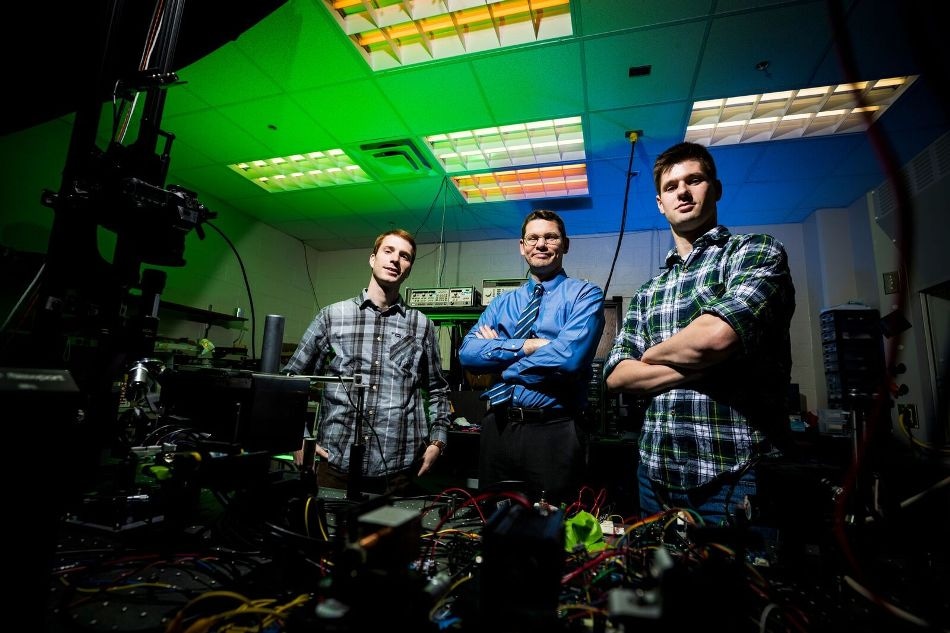Jan 26 2018
In the original Star Wars film, R2D2 projects a picture of Princess Leia in trouble. The iconic scene includes a dialog still well-known four decades later: “Help me Obi Wan Kenobi, you’re my only hope.”
 Dr. Smalley with his student researchers. (Photo credit: Nate Edwards, BYU Photo)
Dr. Smalley with his student researchers. (Photo credit: Nate Edwards, BYU Photo)
BYU electrical and computer engineering professor and holography expert Daniel Smalley has long had a goal to develop the same type of 3D image projection. In a paper published recently in Nature, Smalley details the technique he has formulated to do so.
We refer to this colloquially as the Princess Leia project. Our group has a mission to take the 3D displays of science fiction and make them real. We have created a display that can do that.
Daniel Smalley
To be clear, Smalley explains that the image of Princess Leia is not what people assume it is: it’s not a hologram. A 3D image that hovers in air, that you can walk around and see from every angle, is actually termed a volumetric image. Examples of volumetric images include the enormous image-projecting table in Avatar or the 3D displays Tony Stark interacts with in Ironman.
A holographic display distributes light at a 2D surface only. If a person isn’t looking at the scattering surface they wouldn’t see the image. A volumetric display has little scattering surfaces scattered all over a 3D space — the same space occupied by the 3D image — so if you are looking at the image, you are also looking at the scatters. Therefore, a volumetric image can be viewed from any angle.
Smalley and his coauthors have developed a free-space volumetric display system, based on photophoretic optical trapping, which forms full-color, aerial volumetric images with 10-micron image points by persistence of vision.
“We’re using a laser beam to trap a particle, and then we can steer the laser beam around to move the particle and create the image,” said undergrad coauthor Erich Nygaard.
Smalley said the easiest technique to comprehend what they are doing is to think about the images they develop like 3D-printed objects.
“This display is like a 3D printer for light,” Smalley said. “You’re actually printing an object in space with these little particles.”
Thus far Smalley and his student researchers have 3D light printed a prism, a butterfly, the stretch-Y BYU logo, rings that wrap around an arm and an individual in a lab coat crouched in a position similar to Princess Leia as she starts her projected message.
While past researchers outside of BYU have done associated work to develop volumetric imagery, the Smalley team is the first to use optical trapping and color successfully. Their technique of trapping particles and illuminating it with colorful lasers is truly novel.
“We’re providing a method to make a volumetric image that can create the images we imagine we’ll have in the future,” Smalley said.
Beyond holograms: Star Wars-inspired 3D images float in free space
Video Credits: Producer Julie Walker, Cinematographer Brian Wilcox, Editor Hannah Hansen